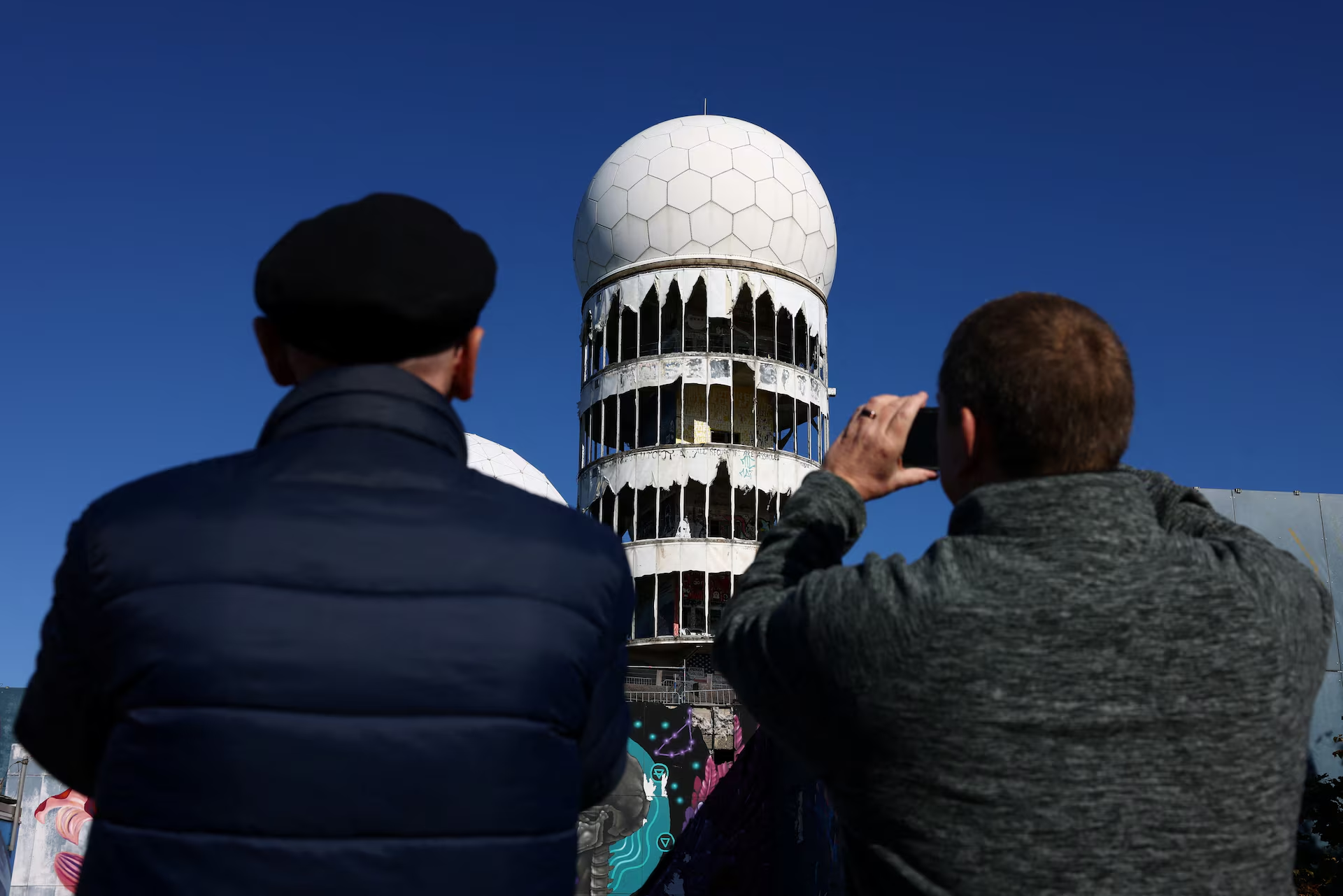Hidden within the forests of western Berlin lies Teufelsberg Berlin, a site layered with history, secrets, and transformation. What appears today as a simple mound rising 80 meters above the capital is in fact a man-made hill built on top of wartime rubble, covering the remains of a Nazi military college. Over the decades, this artificial mountain evolved into one of the most important Cold War spy stations, making it a fascinating landmark that bridges Germany’s dark past and tense geopolitical standoff.
The Origins of Teufelsberg Berlin
The story of Teufelsberg Berlin begins in the aftermath of World War II. Berlin, left in ruins after relentless bombing campaigns, faced the challenge of disposing millions of tons of debris. The solution was to transport much of the rubble to the city’s outskirts, creating artificial hills. Beneath Teufelsberg, however, lie the remains of a military academy designed by architect Albert Speer, one of Adolf Hitler’s closest allies. The Allies attempted to demolish the massive structure after the war but found it nearly indestructible. Eventually, they chose to bury it under rubble, sealing away both the college and part of Germany’s wartime legacy.
Teufelsberg Berlin During the Cold War
With its height and location, Teufelsberg Berlin became a valuable asset during the Cold War. In the 1950s, U.S. intelligence agencies, joined by British and French allies, recognized its strategic vantage point overlooking Soviet-controlled East Germany. They constructed a listening station equipped with radars and antennas to intercept military and diplomatic signals.
Former intelligence officers have described how the site played a crucial role in monitoring Soviet and East German troop movements. “Our main mission was to provide early warning of an impending attack on Western Europe,” recalled William McGowan, a U.S. veteran who served at the site. The intelligence gathered from Teufelsberg contributed to NATO’s ability to track Warsaw Pact activities throughout the 1960s, 70s, and 80s.
At its peak, Teufelsberg employed hundreds of American and British personnel, operating around the clock in shifts. The massive white radomes, resembling giant golf balls, became an iconic part of West Berlin’s skyline.
Abandonment and Decay
After the fall of the Berlin Wall in 1989 and the reunification of Germany, the intelligence-gathering role of Teufelsberg Berlin quickly diminished. By the early 1990s, the listening station was abandoned, leaving behind empty towers, peeling paint, and crumbling structures.
Developers attempted to transform the site into a luxury housing complex and hotel in the 1990s, but financial and political challenges stopped those plans. Instead, the abandoned buildings attracted graffiti artists, urban explorers, and history enthusiasts. Today, Teufelsberg has become an open-air museum of sorts, where colorful street art decorates the once-secret spy station.
Teufelsberg Berlin Today
In recent years, Teufelsberg Berlin has gained popularity as a tourist destination and cultural hotspot. Guided tours allow visitors to explore the abandoned structures, climb the towers, and enjoy panoramic views of Berlin, including the Fernsehturm (TV Tower) in the east. The site also hosts art installations, concerts, and community events, turning what was once a symbol of secrecy into a place of openness and creativity.
According to local tourism statistics, visitor numbers to Berlin’s unique historical landmarks, including Teufelsberg, have steadily increased since 2018. In 2023, Berlin welcomed over 12 million visitors, many of whom sought out unconventional attractions like Teufelsberg in addition to the Brandenburg Gate and Berlin Wall Memorial.
Symbolism and Legacy
The transformation of Teufelsberg Berlin from Nazi military academy ruins to a Cold War spy base, and finally to a cultural site, reflects the broader journey of the city itself. Berlin has long been a place where history collides—where tragedy, conflict, and division are eventually reshaped into memory, art, and dialogue.
For historians, Teufelsberg is a reminder of the resilience of cities in the face of destruction. For former intelligence officers, it recalls the decades-long struggle for control between East and West. For modern visitors, it offers both an educational experience and a space for creativity in one of Berlin’s most unusual landscapes.
Teufelsberg Berlin stands today as one of the most fascinating landmarks in Germany’s capital. From its buried Nazi architecture to its secretive Cold War intelligence role, and finally as a hub for art and tourism, the site embodies Berlin’s capacity to reinvent itself. While the antennas and radomes may no longer track Soviet signals, they now symbolize openness and creativity, drawing thousands of visitors each year.



